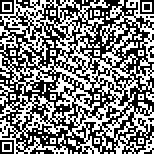| 摘要: |
| [摘要] 目的 分析健康人群不同年龄组小脑脚(CPs)及小脑上脚交叉(DSCP)的扩散张量成像(DTI)相关参数特征。方法 招募60名健康成人进行DTI检查,按年龄分为A组(20~39岁)、B组(40~59岁)、C组(60~79岁),每组20名。比较CPs和DSCP的平均扩散系数(DCavg)和各向异性分数(FA)值在同组小脑左右侧间以及不同组间的差异。结果 在不分组情况下,小脑上脚(SCP)、小脑中脚(MCP)和小脑下脚(ICP)的DCavg、FA值在左右侧间的比较差异无统计学意义(P>0.05)。不同年龄组间DSCP的DCavg及FA值、SCP的FA值、ICP的DCavg值差异有统计学意义(P<0.05)。其余同部位不同年龄组间DCavg、FA值差异无统计学意义(P>0.05)。结论 DTI能够反映CPs及DSCP的生理变化,直观显示小脑通路纤维束结构状态,为研究小脑病变提供更全面的信息。 |
| 关键词: 扩散张量成像 小脑脚 平均扩散系数 各向异性分数 |
| DOI:10.3969/j.issn.1674-3806.2019.06.16 |
| 分类号:R 445 |
| 基金项目:广西卫健委科研课题(编号:Z2016284) |
|
| Characteristics of DTI related parameters in normal cerebellar peduncles and the decussation of superior cerebellar peduncle of healthy people in different age groups |
|
LONG Xiu-ling, XIA Zhen-yuan, DAI Yi, et al.
|
|
Department of Radiology, the Second Affiliated Hospital of Guangxi Medical University, Nanning 530007, China
|
| Abstract: |
| [Abstract] Objective To explore the diffusion tensor imaging(DTI) parameter features of cerebellar peduncles(CPs) and decussation of superior cerebellar peduncle(DSCP) in different age groups of healthy people. Methods Sixty healthy adults were recruited for DTI examination and they were divided into group A(20~39 years), group B(40~59 years) and group C(60~79 years) according to different ages, with 20 cases in each group. The average diffusion coefficient(DCavg) and fractional anisotropy(FA) values of the CPs and DSCP were compared between the different cerebellar sides in the same group and among group A, group B and group C. Results Overall, the DCavg and FA values of superior cerebellr pedunecles(SCP), middle cerebellar peduneles(MCP) and inferior cerebellar peduneles(ICP) were not significantly different on the left and right sides(P>0.05). There were significant differences in DCavg and FA values of DSCP, FA values of SCP, and DCavg values of ICP among different age groups(P<0.05). There were no significant differences in DCavg and FA values in other parts between among age groups(P>0.05). Conclusion DTI can reflect the physiological changes of CPs and DSCP, and visually show the structure of the cerebellar pathway fiber bundle, providing more comprehensive information for the study of cerebellar lesions. |
| Key words: Diffusion tensor imaging(DTI) Cerebellar peduncles(CPs) Average diffusion coefficient(DCavg) Fractional anisotropy(FA) |

